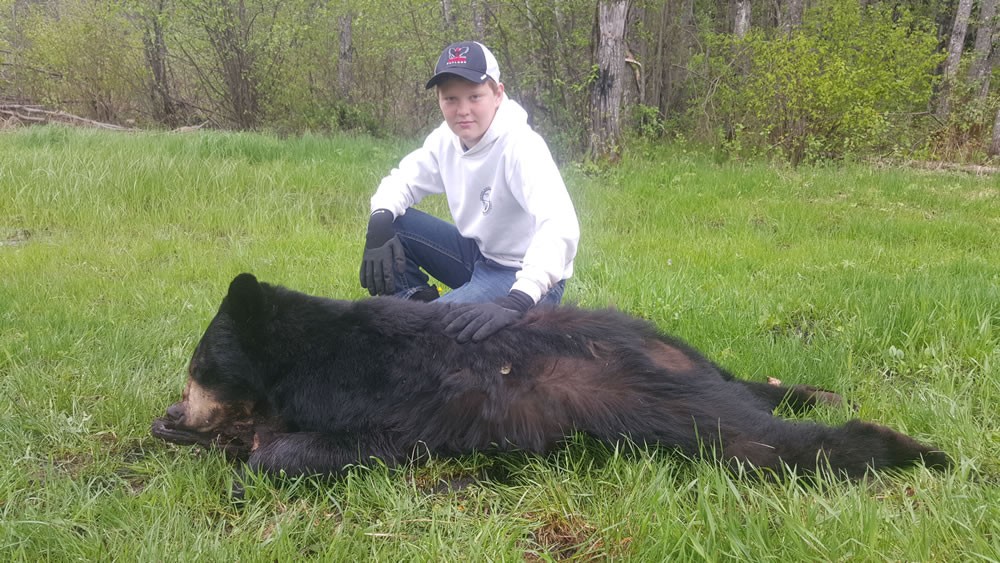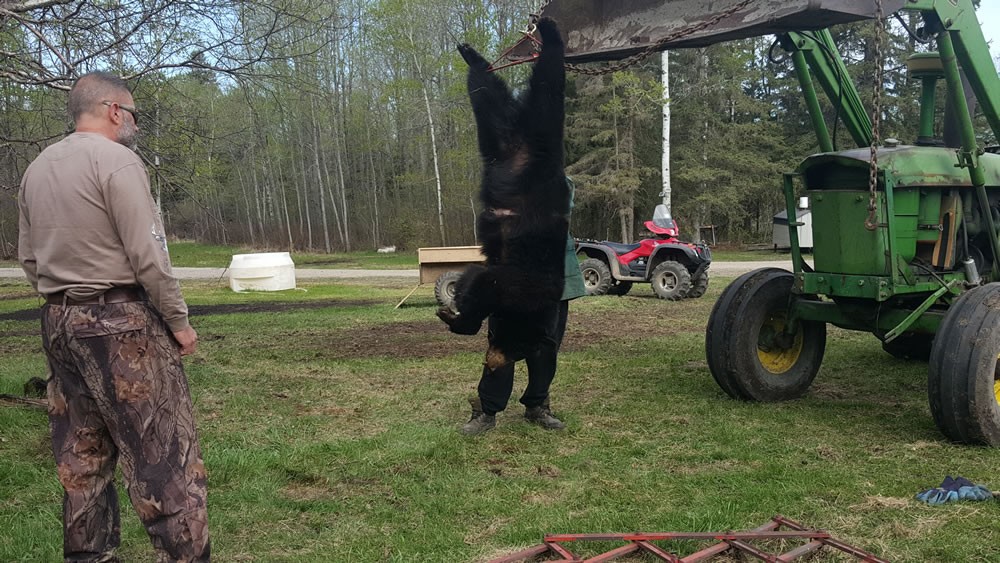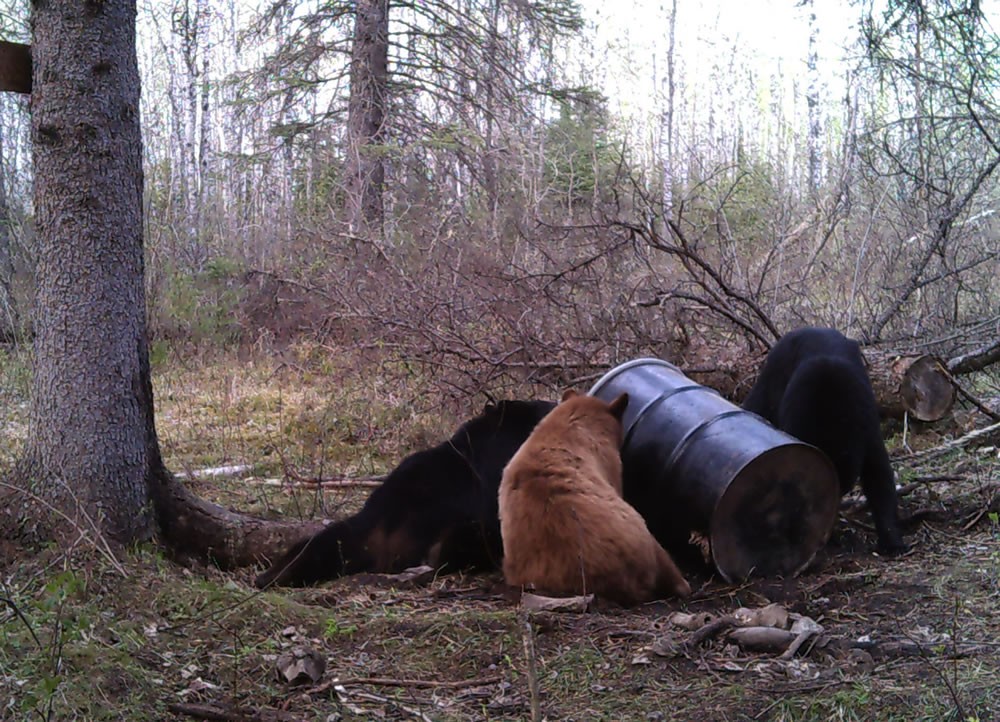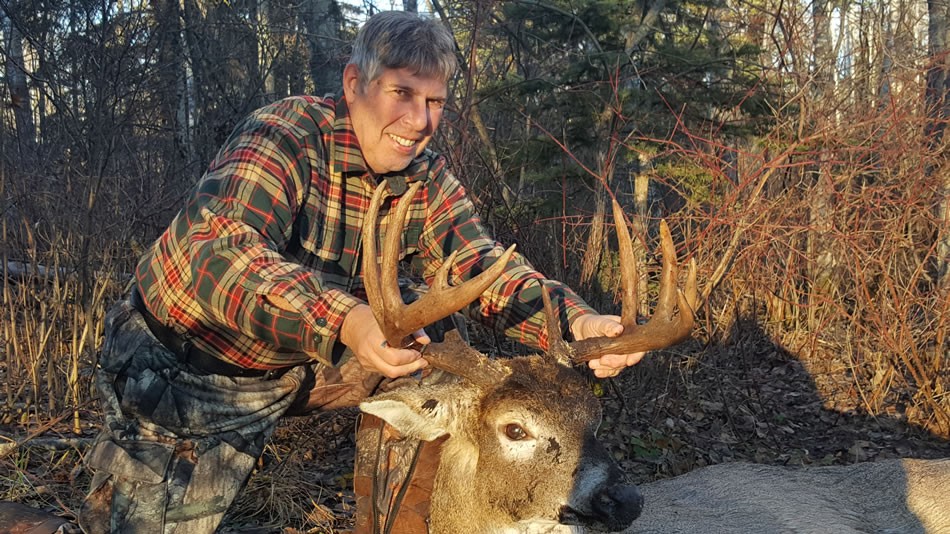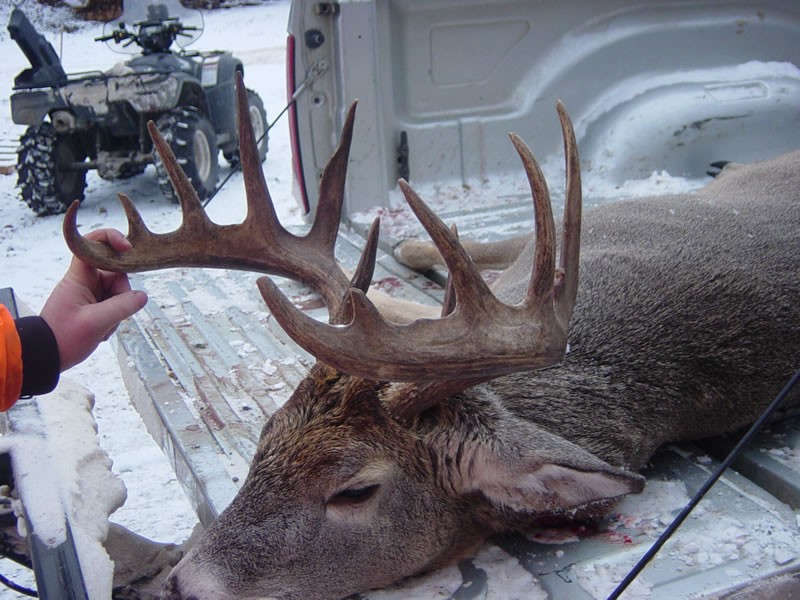Most Canadian bound hunters probably know that a number of years ago, in order to relieve themselves of the many complaints from resident landowners about trespassing bird and duck hunters, Saskatchewan decided to draw a line separating provincial forest lands from the southerly farm lands. This line runs from the Manitoba border, westerly to Alberta, lying about 30 to 75 miles north of Saskatoon. This put most farm land deer off limits to US hunters. We have been looking for a long time, to try and find a legally huntable area south of the northern Provincial forest region, so the farmland fringe could be hunted.
We all know farmland deer get plenty to eat, much more so than the big woods bucks that most hunters get to see in the northern Provincial forest. South, in the so-called fringe farmland, just south of the Provincial forest, we believe we may have found exactly that. We are very familiar with the deer that come out of that area, which also borders Manitoba. This area is about a 3-hour drive from Saskatoon, and he has a huge swath to hunt, which is tough to find in Saskatchewan.
If you want a giant whitetail with a 300-pound body, a huge thick neck, and massive heavy horns that make such spectacular trophy mounts, then this is the hunt for you. This outfitter hunts 50,000 acres in the farmland fringe (that is a lot of ground), and there are only a handful of outfitters in Saskatchewan that have allocated hunting areas within the farmland fringe, making this area a real gem! We test hunted here several years back and, despite warm weather, many deer were seen and the best deer harvested was a 164” B&C. Since then, many 140- to 160-class deer have been taken here. We liked seeing good numbers of deer every day, which is not something seen everywhere in Saskatchewan! Just ask Hunt Nation founder Butch Manasse, as he test-hunted a different outfitter in the big woods of this Province and never saw a deer in 55 hours of hunting!
This outfitter has been guiding waterfowl hunters for many years, handling between 100 and 150 hunters per year, and his clients give him high marks. The usual comment is “DO NOT change anything!” So he is used to handling hunters, and usually in much larger numbers than the few he takes into his deer camp every year (usually only 4 per week for 4 weeks)! He prides himself on being very well organized and very capable.
Furthermore, in his own words:
“My new deer area is located near Hudson Bay in North East Saskatchewan which I have always considered to be THE prime deer area in the province. I have hunted this area myself every year since 1997 for moose and/or elk and have always been astounded at the quality and number of deer we saw. To reach their full potential, bucks need the nutrients found in the grain and alfalfa grown in the fields neighboring the forest. The deer we will be hunting will typically frequent the farm land, mostly at night to secure their nutritional needs then head back to the safety of the forest for the daylight hours. We are fortunate enough to be able to hunt the farmland, the forest, and the fringe where the two meet – giving our clients the best possible opportunity at bagging the buck of their dreams!”
Hunters sit either in ground blinds or elevated box blinds, overlooking active baits. Once the agricultural crops in the area have been harvested, the deer move into the bush 24/7, and these bait sites become a big food source, especially when snow covers the forest’s natural forage and cold temperatures force the deer to feed more. It is not uncommon under these conditions to see 10-15 deer per day, including numerous bucks.
The outfitter encourages clients to shoot only deer scoring 140 B&C or better, and most hunters go home with a buck in the 140”-150” range. However, those who have the discipline and patience to pass up the 140+” bucks are often eventually awarded with a chance at a 160+”. Success rates are about 90% and close to 100% opportunity.
WATERFOWL
This outfitter hunts in the midst of the Central Flyway. The area consists of over 10,000 square miles of lakes, river valleys, marshes, potholes, and grain fields, providing excellent habitat for waterfowl. They have long-standing relationships with many of the landowners in the area, providing excellent hunting opportunities and very limited hunting pressure.
Duck hunting usually involves hunting small potholes, or an evening field shoot over decoys for big northern mallards and pintails. Goose hunting (Canadas, specks and snows) is done in harvested grain fields with layout blinds over full-body decoys. They also have fantastic sandhill crane hunting, along with some upland birds.
2025 PRICES (subject to change without notice until deposit received; all prices in USD)
DEER
5-Day Guided Hunt (Monday to Friday) – FULL FOR 2025
WATERFOWL
$3,300 USD per person. Includes: 5 hunts (3 mornings & 2 afternoons); meals and lodging; bird cleaning; airport/hotel transfers (if you are driving, there is a lower-priced package that doesn’t include transfers); hunting license; shotgun rental; unlimited ammo. For extra $600 USD per person, add hotel lodging in Saskatoon before & after hunt, and decoy service (decoys are set up in advance of hunters arriving in the field for each hunt). Prices do not include 11% sales tax and tips.
Includes transportation, lodging and meals during the hunt, and pick up at the airport or your hotel in Saskatoon. Does not include hunting licenses (approx. $350), sales tax (approx. 11%), meat processing or taxidermy.
ACCOMMODATIONS
Hunters are housed in a five-bedroom lodge with a large living room/gathering area with sofas, 60″ satellite TV, and a fridge for your use. For those who like more privacy, there is a cabin just a few steps from the front door. The addition of a newly built 2,000 square foot shop is the perfect place to watch while your game is skinned and prepared for shipping or mounting. The chef prepares hot, hardy, and healthy meals, including a hot breakfast with homemade breads and muffins, before sending you off with a bagged lunch for your all-day hunt. The people who run the lodge are a lot of fun to be around and take hospitality to a whole new level. The atmosphere around camp is fun and relaxed, especially once you fill your tag.
GETTING THERE
Fly into Saskatoon International Airport. Free airport pickup! The outfitter meets you and transports you to and from camp AT NO CHARGE! That beats paying $500 for a rental car. Most hunters fly in Saturday, spend the night at a hotel in Saskatoon (the outfitter will give you recommendations), and the outfitter picks you up at your hotel on Sunday morning. You arrive in camp in time to shoot your rifle and be ready to hunt Monday morning.
GETTING YOUR WEAPON INTO CANADA
You are allowed to bring your personal firearm with you. This includes your rifles, shotguns or muzzleloaders (NO HANDGUNS OR FULLY-AUTOMATIC RIFLES!). For your firearms, a simple one-page form is required to be filled out to obtain a temporary Canadian firearms permit. This form can be down-loaded or mailed to you well in advance from The Royal Canadian Mounted Police at www.cfc-cafc.gc.ca. Click on the link on the left hand side for visitors/non-residents, then download the NON-RESIDENT FIREARM DECLARATION (form RCMP 5589/CAFC 909). Completing this in advance should reduce your time clearing customs. DO NOT SIGN IT UNTIL YOU APPEAR IN FRONT OF CUSTOMS, but fill it out. A confirmed declaration costs a flat fee of $25, regardless of the number of firearms listed on it. It is only valid for the person who signs it and for those firearms listed on the declaration. It is a simple form to fill out. IF YOU HAVE A DUI OR A CRIMINAL RECORD, CALL US! YOU MAY BE DENIED ADMITTANCE. NO FORMS ARE REQUIRED TO BRING YOUR HUNTING BOW INTO CANADA!
BOOKING TERMS:
Your deposit is non-refundable unless the hunter or outfitter is able to find an alternate hunter to fill the same time slot. Balance of the hunt price is due 30 days pre-hunt. They also require clients to sign a hunt contract detailing the terms under which the hunt is being offered. There are no refunds if the client arrives late or leaves early for any reason or doesn’t arrive at all. There is no discount if the client drives to camp or rents a vehicle and therefore doesn’t require airport pick-up. If you plan to leave camp early after harvesting your deer, you should rent a car and drive to camp.


